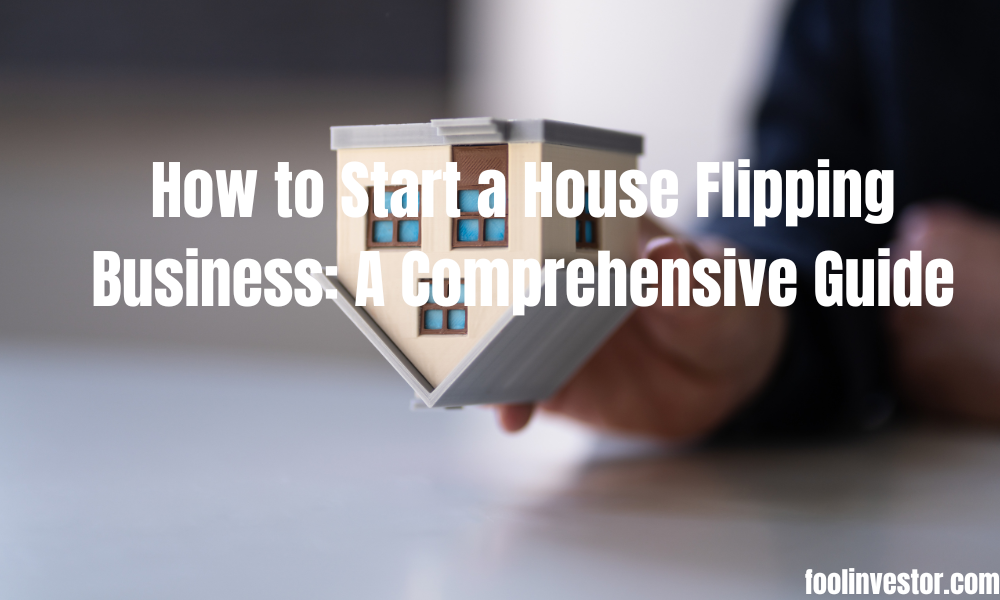Are you interested in entering the lucrative world of house flipping? With the right knowledge and strategies, this can be a profitable business venture. In this comprehensive guide, we will walk you through the essential steps to start your own house flipping business. From developing a solid business plan to securing financing and finding the right properties to flip, we’ve got you covered. So, let’s dive in!
Why Start a House Flipping Business?
Starting a house flipping business can be a rewarding endeavor for those who are willing to put in the hard work. Flipping houses involves purchasing properties that are in need of repairs or renovations, improving them, and then selling them at a higher price. The potential for significant returns on investment makes house flipping an attractive business opportunity.
There are several types of properties that are typically targeted by house flippers. These include homes that require extensive repairs, outdated homes in up-and-coming neighborhoods, and foreclosed homes. If you have experience in the housing industry as a real estate agent or contractor, you can leverage your skills and knowledge to make informed decisions about the properties you choose to flip.
How Much Does It Cost to Start a House Flipping Business?
Before diving into the world of house flipping, it’s important to understand the costs involved in starting this business. This includes the down payment on the house and operational expenses such as licensing and registering your business.
The amount you need to invest will vary depending on the type of properties you plan to renovate and their location. It’s crucial to hire reliable contractors who can handle the renovations and keep your turnaround times manageable. The cost of hiring contractors typically ranges from $50 to $150 per hour on average. Additionally, if you choose to work with a realtor, you will need to factor in their commission fee, which is usually around 5-6% of the profit on your flip.
8 Steps to Starting Your Own House Flipping Business
Now that you understand the basics of starting a house flipping business, let’s dive into the step-by-step process:
Step 1: Research the Market
Before investing in any property, it’s essential to thoroughly research the market. Consult with realtors who have up-to-date information on properties that are prime for selling in your desired area. Additionally, seek advice from real estate attorneys to ensure you are aware of any potential legal issues that could arise during the flipping process.
Utilize the power of the internet to conduct market research. Identify areas where buyers are actively purchasing properties, determine the average prices they are paying, and assess the features they are looking for in a home. This research will help you narrow down your target niche and establish a budget for your startup funds.
Step 2: Plan Your Budget
Creating a comprehensive budget is crucial to protect your profits and ensure the success of your house flipping business. Start by determining how much you can afford as a down payment on your first property. Consider the cost of renovations, hiring contractors, creating a website for your business, and other expenses such as materials, permit fees, and advertising.
It’s important to factor in unexpected delays and hidden property problems that may require additional funds. By carefully planning your budget, you can mitigate the risk of running out of money and ensure a smooth flipping process.
Step 3: Write Your Business Plan
Every successful business starts with a well-crafted business plan, and a house flipping business is no exception. Your business plan should outline the purpose of your business, evaluate the industry and competition, project profitability, and state your goals. It should also include basic timelines, projected budgets, target markets, and the types of properties you plan to flip.
Having a solid business plan not only helps you stay on track but also increases your chances of obtaining funding from investors and lenders. It shows that you have a clear vision for your business and are well-prepared for success. Consider creating a condensed one-page business plan to start, highlighting your objectives, financial summary, and industry experience.
Step 4: Set Up Your Business
To operate your house flipping business legally, you need to choose a business entity and register your business with the state. Opt for a business structure that provides limited liability protection, such as an LLC or corporation. Consult with a business attorney to determine the best option for your specific needs.
Once your business is established, obtain an Employer Identification Number (EIN) from the IRS for tax purposes. Additionally, secure the necessary insurance, permits, and licenses required to operate your business. This includes general liability insurance, commercial property insurance, workers’ compensation, and any permits specific to the construction industry.
Step 5: Grow Your Network
Building a strong network is essential for the success of your house flipping business. Reach out to friends, family, and acquaintances involved in real estate investment or related industries. They can provide valuable advice, connect you with reputable wholesalers, contractors, and realtors, and help you find potential properties.
Participating in local real estate investment groups and joining industry associations can also expand your network. Networking opportunities allow you to learn from experienced professionals, gain insights into market trends, and establish valuable connections for future collaborations.
Step 6: Find Suppliers and Contractors
To ensure the smooth execution of your flipping projects, it’s crucial to find reliable suppliers and contractors. Look for contractors with a proven track record, positive references, and experience in the type of renovations you require. A trusted general contractor can assist in reviewing your renovation plans, estimating costs, and ensuring timely completion of the projects.
Additionally, establish relationships with suppliers who can provide quality materials within your budget. Tap into your network and conduct thorough research to identify reputable options for suppliers and contractors.
Step 7: Assemble a Team
As your house flipping business grows, it’s important to assemble a competent team to support your operations. Consider bringing on business partners or investors who can provide capital resources, industry expertise, or skilled labor. A partner with complementary skills and knowledge can help evaluate deals from different perspectives and increase your chances of success.
Realtors and property owners with extensive experience in the real estate industry can be valuable assets. They can assist in identifying potential properties, navigating contracts and sales, and providing insights into the local market. Lastly, seek legal counsel to ensure compliance with financial agreements and contractual obligations.
Step 8: Obtain Financing
Securing financing is a crucial step in starting your house flipping business. As a new business, traditional bank loans may be challenging to obtain. However, there are various financing options available for house flippers. Consider personal loans from friends or family, tapping into your retirement savings, or exploring combination financing options.
Personal loans from friends or family can provide a flexible and less formal financing solution. If you have a retirement plan, you can explore the option of taking out a loan from your 401(k) to fund your house flips. Combination financing, which involves using multiple financing sources, is also a common strategy utilized by experienced house flippers.
Sourcing Your Deals
Once you have completed the initial steps, it’s time to source the properties you will flip. Identifying your target property market will help you decide whether to work with real estate wholesalers, auctions, or traditional brokers. Real estate wholesalers and auctions often offer a large volume of distressed or foreclosed properties, while traditional brokers can assist in finding specific types of properties.
Consider the scope of renovations and rehabilitation you are capable of undertaking, and ensure that your fix-and-flip loan duration aligns with the timeline for completing the renovations. Thoroughly assess the supply and demand in the local real estate market to make informed decisions about the properties you choose to flip.
Conclusion
Starting a house flipping business requires careful planning, thorough research, and the ability to adapt to changing market conditions. By following the steps outlined in this comprehensive guide, you can lay the foundation for a successful house flipping business. Remember to develop a solid business plan, grow your network, assemble a competent team, and secure the necessary financing. With dedication and perseverance, you can turn house flipping into a profitable and rewarding venture. Good luck on your house flipping journey!



One Response